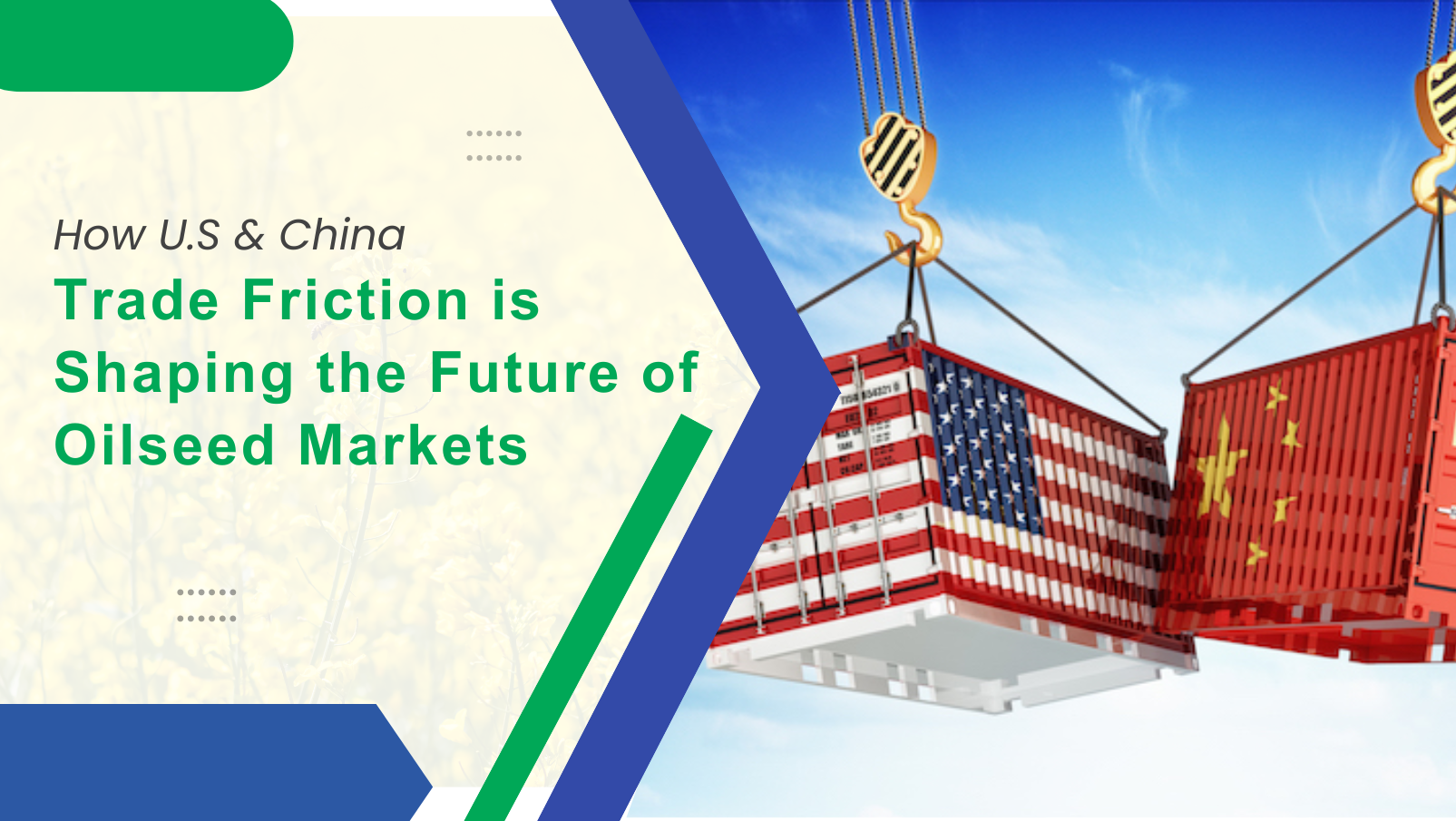The economic tug-of-war between the United States and China has left few global industries untouched. Among the most deeply affected is the global oilseed market—a critical sector that underpins food production, livestock feed, and biofuel industries worldwide. From soybeans to canola, trade friction between the two superpowers is redrawing the map of international agriculture. Indeed, U.S.-China trade friction is shaping the future of oilseed markets in unprecedented ways.

The Trade War’s Origin and Initial Impact
The U.S.-China trade dispute, which escalated significantly in 2018, began with tariffs levied on a wide range of goods. In response to U.S. tariffs on Chinese exports, Beijing retaliated by imposing duties on American agricultural products—including oilseeds such as soybeans. At the time, China was the largest buyer of U.S. soybeans, importing more than 30 million metric tons annually. The sudden shift severely impacted American farmers and disrupted global supply chains.
Tariffs of up to 25% on U.S. soybeans made them economically uncompetitive for Chinese buyers. As a result, Chinese importers began sourcing more soybeans from Brazil, Argentina, and other countries. The redirection not only shifted trade flows but also sent ripple effects through international pricing and production dynamics.
Changing Global Trade Flows
Before the trade tensions, the U.S. had a dominant position in global soybean exports. However, the shift in Chinese purchasing behavior quickly rebalanced the global oilseed trade. Brazil emerged as the primary beneficiary, increasing its soybean exports to China significantly. Argentina also capitalized by increasing its soybean meal exports and entering into new trade partnerships.
This realignment has created long-term implications. Infrastructure investments in Brazilian ports and transport systems, fueled by the surge in demand, are positioning the country as a long-term rival to the U.S. in oilseed exports. Meanwhile, other countries such as Russia and Ukraine are expanding their oilseed production and export capacity, diversifying global supply even further.
Implications for U.S. Farmers
U.S. farmers have borne the brunt of the economic fallout. With reduced access to their largest customer, many have faced lower crop prices, decreased revenues, and higher storage costs. Government subsidies helped cushion the blow in the short term, but uncertainty remains.
To adapt, American producers are seeking to diversify their export destinations. Emerging markets in Southeast Asia, the Middle East, and even Europe have shown promise, but none can fully replace the scale and consistency of Chinese demand. Additionally, U.S. farmers are adjusting crop rotations—planting more corn or wheat in place of soybeans to manage financial risk.
The Broader Agricultural Ecosystem
The influence of U.S.-China trade friction is shaping the future of oilseed markets not just at the commodity level but across the entire agricultural ecosystem. Livestock industries, which rely heavily on soybean meal for feed, have faced fluctuating costs. This volatility has, in turn, impacted meat prices and food production across multiple countries.
Biofuel production is another sector affected by the reshaping oilseed market. Soybeans and canola are key feedstocks for biodiesel, and shifts in supply and pricing ripple through the energy market. As countries push toward renewable energy goals, the stability of the oilseed market becomes even more critical.
A More Fragmented, Resilient Future
One of the lasting consequences of the trade tensions is a more fragmented but resilient oilseed market. Buyers are more cautious about relying too heavily on a single country. Supply chain diversification is becoming the norm, and trade agreements are increasingly structured with geopolitical risk in mind.
For example, China has expanded agricultural trade with Brazil, signed new import agreements with Russia, and even invested in African agriculture as part of its Belt and Road Initiative. The U.S., meanwhile, is bolstering relationships with nations in Asia and Latin America to reduce dependence on Chinese markets.
Policy and Climate: Additional Wild Cards
While trade tensions remain a central force, other variables such as climate change and domestic policy decisions also affect oilseed markets. Droughts in South America, floods in Asia, and changing rainfall patterns globally can disrupt production and shift trade balances. Policy measures—such as subsidies, export bans, and environmental regulations—further complicate the picture.
Conclusion
In a deeply interconnected world, no trade dispute exists in isolation. U.S.-China trade friction is shaping the future of oilseed markets in ways that will have lasting impacts for years to come. From shifting supply chains to transforming global pricing mechanisms, the oilseed industry is navigating a complex, evolving landscape. Stakeholders must remain agile—embracing diversification, investing in resilience, and staying informed—as geopolitical and environmental forces continue to redefine the rules of global agriculture.









